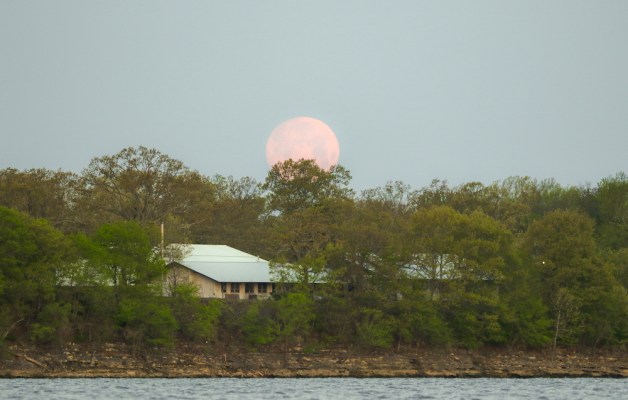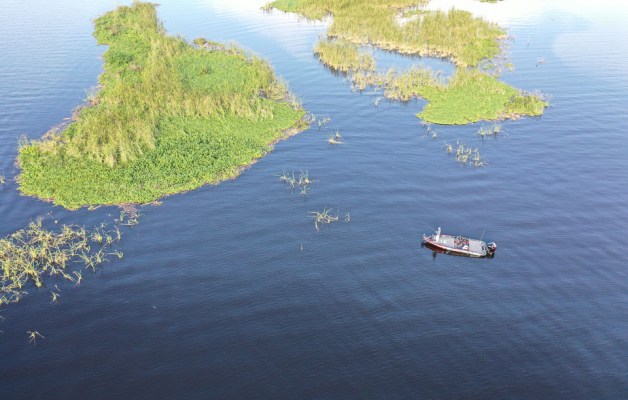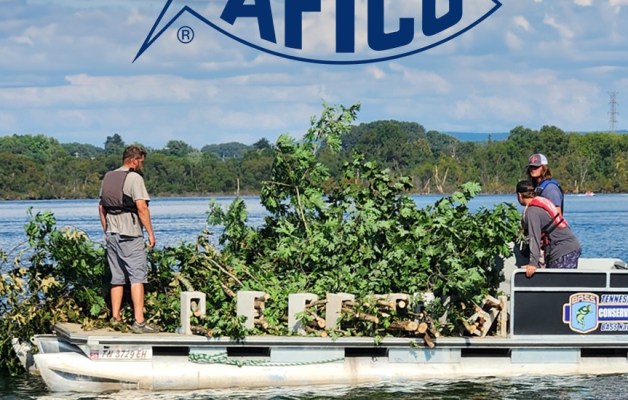
AUSTIN, Texas—The Texas state record Guadalupe bass measured 17.25 inches, weighed only 3.71 pounds, and was caught on fly fishing tackle from the Colorado River downstream from Austin.
What might seem like a yawner of a catch to the average bass angler has greater impact outside the sport than you can imagine. Think more than one million people, or the population of Austin that depends on drawing water from the Colorado River and water supply lakes forming the native range of the species.
Water is scarce and the population is growing. The Texas Hill Country population is projected to climb from the current 3.1 million to 4.3 million by 2030.
Less water, more people. That sounds like situation normal for an arid region like central Texas. So what does a little green fish have to do with solving the problem?
A lot, if you take a look at how water managers, private landowners, conservationists and the Texas Parks & Wildlife Department are working together to preserve the Guadalupe bass.
“There is a tipping point when watersheds are altered, and you begin to see species decline and that is an indicator of a bigger problem,” said Tim Birdsong, chief of habitat conservation for the inland fisheries division of TPWD.
“In our case that is due to tremendous population growth and all of the development that goes with it,” he added.
What is happening in the Texas Hill Country is going on nationwide. The difference is how the Guadalupe bass is playing a role in addressing the scarcity of water and habitat loss.
The good news is the future looks bright for the Guadalupe bass. Private and public sectors have come together to continue a restoration project that began 25 years ago. First came the Texas Legislature naming the Guadalupe bass the official state fish in 1989. That cleared the way for TPWD to establish a wide-ranging conservation plan for the species in 1991.
Birdsong pointed out the choice of the Guadalupe created a source of state pride, because the species was chosen over 13 other native fish.
“The Texas Hill Country is an iconic place to Texans and the Guadalupe is such a charismatic fish,” he said. “In the eyes of bass fishermen it’s a small fish, but to Texans the Guadalupe is a bass like none other. “
Ironically, the fish now revered by Texans almost lost its genetic purity due to the smallmouth bass. In the 1930s and again two decades later the state introduced smallmouths into the South Llano River. The stockings proved unsuccessful in establishing a sustainable population. Meanwhile, the stockings resulted in an unforeseen and unintended hybrid population of Guadalupe and smallmouth.
As part of the restoration plan the TPWD drilled down on the South Llano River and initiated a Guadalupe bass hatchery program to flood the population with the intended results. Some 2.3 million Guadalupe bass were stocked in Hill Country rivers, and today less than 2 percent of the species now consists of hybrids.
TPWD also cast a wide net over the entire watershed as part of the plan.
“As biologists we knew getting out of the water and on the land would be a key to the success of not only preserving the species, but in beginning to address the bigger issues of habitat degradation, water quality, and water supplies,” explained Birdsong.
In addition to the South Llano River stocking program, project partners organized river conservation workshops attended by approximately 750 landowners and local community partners in the watershed.
Overall, 61 river conservation workshops attended by 2,000 landowners spread awareness of the plan across the Hill Country. Thousands of trees, hundreds of packets of native seed mix and thousands more sedges and grasses were distributed.
“Getting private landowners, specifically ranchers whose livelihoods depend on riparian habitat, to buy into the plan was important to our goals,” said Birdsong.
Over 78,000 acres of ranchlands implemented stewardship practices to help preserve fish habitats. Restoration projects in the watershed restored 7,754 acres of spring, stream and riparian habitats, directly benefiting water quality and habitat conditions for Guadalupe bass.
“These and other conservation efforts in the South Llano River watershed have successfully restored Guadalupe bass populations and helped promote local stewardship practices that will ensure the river is able to sustain Guadalupe bass populations into the future,” said Megan Bean, TPWD conservation biologist.
The public sector came next, with anglers and conservation groups jumping aboard the Guadalupe bandwagon, bringing the effort full circle.
“Restoration of Guadalupe Bass has provided a great mechanism to help landowners and the general public visualize the connection between good land stewardship and the aquatic health of our rivers,” added Tyson Broad, Watershed Coordinator at the Llano River Field Station and co-founder of the Llano River Watershed Alliance.
“Taking care of our lands has benefits far beyond our fence lines,” he added.
In addition to being ecologically important and a symbol of pride as the official state fish, the Guadalupe bass is a prized sport fish of Hill Country anglers.
“Through our recent economic impact study conducted in partnership with the Texas Tech University Llano River Field Station, we found that river fishing in the Hill Country generated $71 million over a sixteen-month period,” said Stephan Magnelia, Director of River Studies for the TPWD Inland Fisheries Division.
“Forty-two percent of anglers surveyed specifically targeted Guadalupe bass, which speaks to the recreational value and economic impact of our state fish on local communities in the Hill Country.”
The effort is going full throttle into the future. TPWD updated the Guadalupe bass conservation plan to guide restoration and preservation of the species into the next decade.
And maybe, just maybe, an even bigger state record will get caught. With the Guadalupe bass it’s the little things that go a long way toward helping solve even greater needs.





